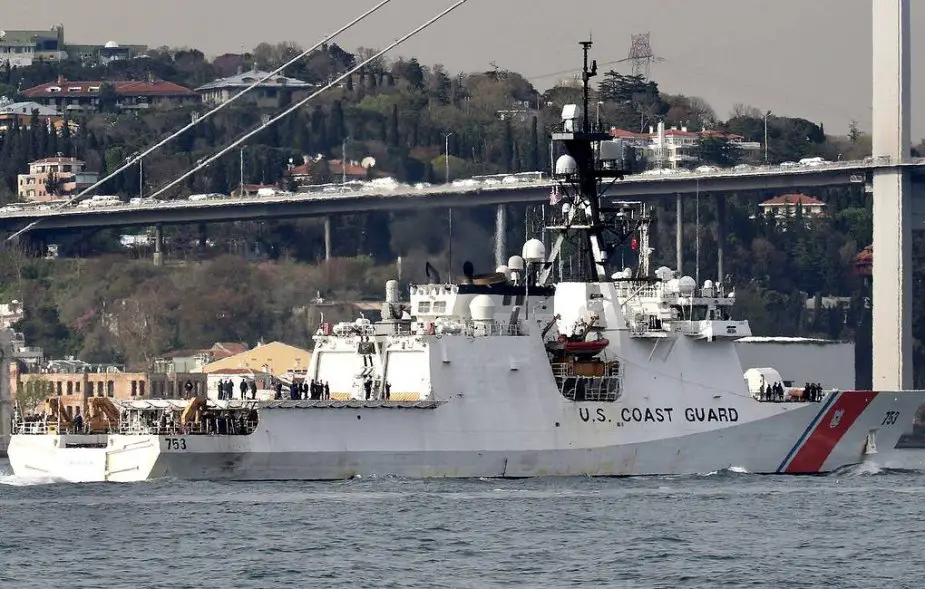Breaking news
U.S. Coast Guard conducts operations with Turkish Navy in Black Sea.
According to information published by U.S. Navy on April 30, 2021, the Legend-class national security cutter USCGC Hamilton (WMSL 753) conducted a series of maritime exercises with the Turkish Navy in the Black Sea.
Follow Navy Recognition on Google News at this link
 USCGC Hamilton entering in Black Sea via Bosphorus (Picture source: Reuters)
USCGC Hamilton entering in Black Sea via Bosphorus (Picture source: Reuters)
Hamilton conducted a passing exercise and cross-platform helicopter operations with the Turkish Navy’s Yavuz-class TCG Turgutreis (F-241).
During flight operations, helicopters from both nations landed on each other’s vessel’s flight decks. A Bell UH-1 Iroquois helicopter from Turgutreis landed aboard Legend-class USCGC Hamilton (WMSL 753), while a U.S. Coast Guard MH-65 Dolphin helicopter landed on Turgutreis. These maneuvers and operations enhanced both vessels ability to communicate and conduct precise ship handling.
TCG Turgutreis (F-241) is a Yavuz-class frigate of the Turkish Navy. Yavuz-class frigates are armed with eight Harpoon launchers, two Oerlikons in a second turret at the stern, and two light machine guns.
The Legend-class NSC is the most technologically advanced ship in the Coast Guard’s fleet, which enables it to meet the high demands required for maritime and homeland security, law enforcement, marine safety, environmental protection and national defense missions. NSCs are 418 feet long with a top speed of 28 knots, a range of 12,000 miles, an endurance of 60 days and a crew of 120.
The Legend-class National Security Cutters (NSC) are the flagships of the U.S. Coast Guard. They are the largest and most technologically advanced ships in the Coast Guard’s fleet, with capabilities for maritime homeland security, law enforcement and national security missions.
The NSC features advanced command, control, communication, computers, intelligence, surveillance and reconnaissance equipment, as well as aviation support facilities and stern boat launch capability. Technological advancements will also allow a smaller crew to operate an NSC, reducing manpower requirements.The NSC also carries enough food and consumables to stay at sea for 60 days and has the ability to conduct vertical replenishment at sea and to refuel at sea in order to extend patrols.
The NSC has a length of 127 m, a beam of 16 m, and a draft of 6.9m. The ship has a Combined Diesel and (CODAG) propulsion system consisting of two 7,400 kW (9,900 hp) MTU 20V 1163 diesel engines and one 22 MW (30,000 hp) LM2500 gas turbine engine. She can reach a top speed of 28 knots/32 mph/52 km/h with a maximum cruising range of 12,000 NM/13,809 miles/22,224 km. The ship has an endurance of 60 days and a crew of 120 sailors.
The NSC is armed with one MK 110 57mm gun a variant of the Bofors 57 mm gun and Gunfire Control System, one 20 mm Block 1B Baseline 2 Phalanx Close-In Weapons System, four crew-served .50 caliber (12.7 mm) Browning M2 machine guns and two crew-served M240B 7.62 mm machine guns.



























